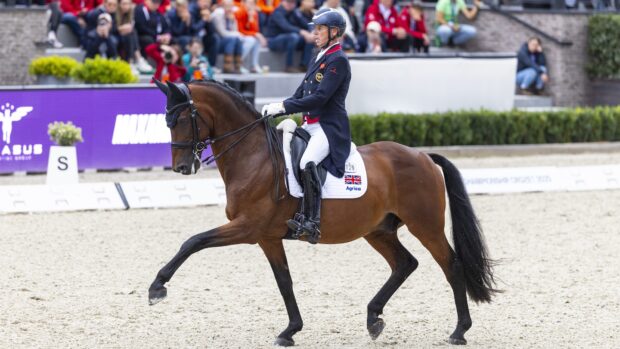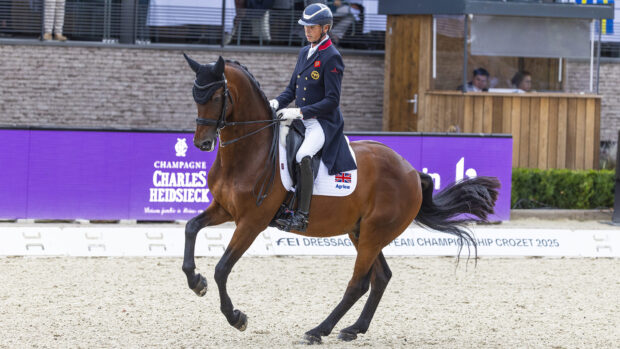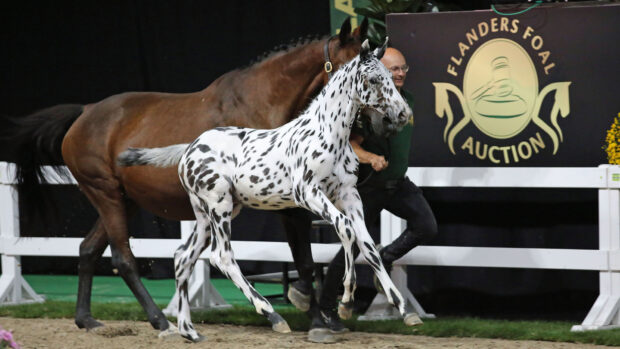British Dressage’s new young horse forum initiative kicked off on Monday (16 January) at Matt Hicks’ Hampshire base, Hurstbourne Equestrian Centre.
Hosted by Paul Hayler, Paul Fielder and Isobel Wessels, the day featured young horses from four years old showcasing the new four-year-old test, right up to a demonstration of the tricky new test for seven-year-olds.
Four-year-old guinea pigs:
- Beth Bainbridge on Harriet Mills’ Indie (by Dream Boy)
- Abi Hutton on Lotty Chatterton’s Suspension Innocent (pictured) (by Glock’s Johnson x Dayano)
The new four-year-old test, while still a straightforward pattern in the arena, now includes medium strides.
“The medium strides in the test now mean that the adjustability can be truly judged,” explained grand prix rider and championship judge Isobel Wessels. “We’re looking for horses with good rhythm — it’s so important — swinging through from behind and taking an easy straight contact. We want to see supple bending in the corners, and willingness to make transitions and hold self-carriage. It’s really quite difficult to produce a horse for highest level without a natural uphill tendency and self-carriage.”

Paul Fielder agreed: “I like to see horses that are ‘body movers’, not just ‘leg movers’. They need to move through the back. Then when they shorten their bottom line [elbow to stifle] later on for the collected work, you’ll have a horse with an elastic back.”
The two four-year-old horses shown were of contrasting types, with Abbie’s horse being rangy, long-lined and leggy, while Beth’s Indie is a more compact, shorter-coupled type. Beth had only been riding the mare for two weeks.
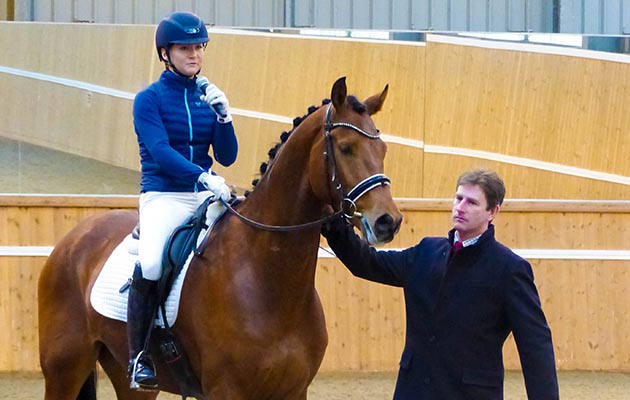
All three presenters stressed that young horse classes are not for every horse, and to assess each horse readiness individually.
“There are many reasons that some horses won’t suit four-year-old classes,” explained Isobel. “It might be because of their teeth or because they’re croup high. Don’t despair — with some you will have to wait until the five-year-olds.”
The panel discussed the basic ingredients needed for a promising young dressage horse, with Isobel asserting that a horse who doesn’t naturally want to move forward and who needs strong aids is “a no-go area”.
Paul Fielder said that the first thing he looks for in a four-year-old when judging is “the scales of training, starting with a nice steady rhythm. The power will develop later.”
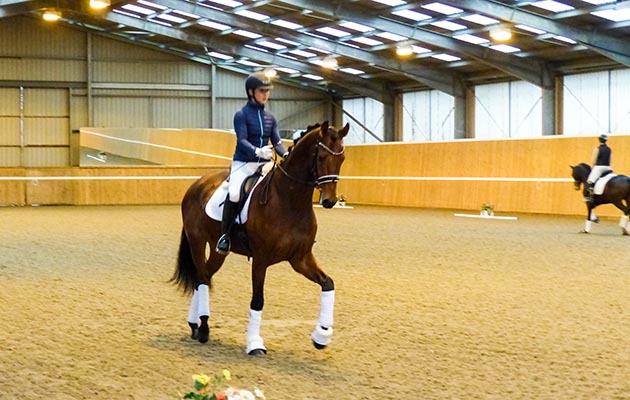
Looking at Beth’s horse, he said: “I can already see nice acceptance of the contact, no major issues and a nice outline and harmony between the horse and rider, which would already be making me think highly about the rideability.
Paul Hayler added: “I like the regularity of the hindleg. You can see all the joints moving and the hindleg stepping into the hoof print left by the foreleg.”
Some horses are more naturally talented, and those animals will “give you more for free” because it comes more automatically, added Paul Fielder.
Abi’s horse, the gangly “Zeni” is developing at a slower rate than Beth’s horse.
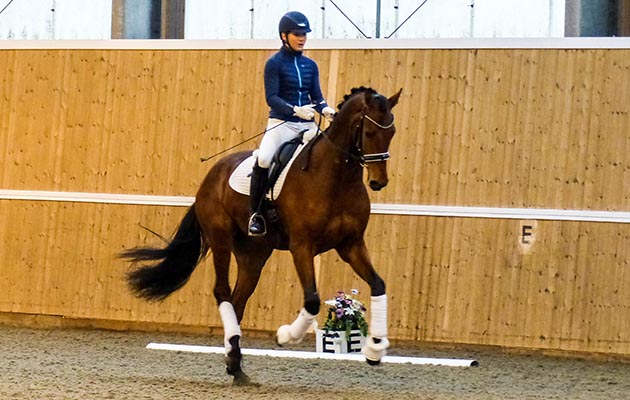
Paul Hayler said: “I see uphill carriage, though the rhythm could be more secure — there’s some variation in the size of the strides he’s taking. He could also be a bit stronger in the hindlegs, but he’s a big horse and will take longer to develop. This one is weak, but very willing.
“Sometimes riders — and owners — can expect too much from big, young horses.”
Paul Fielder was impressed by the overall picture.
“He’s showing pleasing acceptance of the influence of the rider,” he said. “The riding is good, as is the presentation — what more would you want? It’s a really good start.”
The team then discussed Beth’s horse Indie’s canter.
“The mechanic of the canter is very good with the hindleg naturally closed and a good split in the hindlegs when they land,” said Isobel.
Paul Fileder explained what he is looking for in the pace: “I want to see the inside hindleg placed so as it can lift the inside shoulder — it helps to make that uphill tendency. If a horse has that willingness then rider can influence better as the work gets harder.”
Continued below…
Like this? You might also enjoy reading these:
What to look for in a quality walk in a young dressage horse
Settling for an average trot — and more pet hates of dressage judges
How to create perfect dressage plaits
All three agreed that transitions are a window into the horse’s pliability and rideability. They also stressed that they want to see natural movement, not an over-produced passage-type trot.
Paul Hayler said: “Sometimes young horses can be ridden a bit backwards — particularly if they are fresh — and this can stifle their production. The two we’re seeing today are nice and forward into the hand.”
Both young horses performed the new test, which includes medium paces down the long side to test not only the horse’s adjustability, but also their straightness as they tend to go quarters-in naturally.


